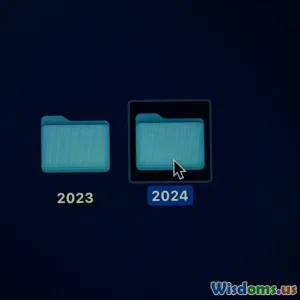
A DataDriven Look at WorldBuilding Trends in 2024
5 min read An insightful analysis of 2024's leading worldbuilding trends using data-driven research to reveal emerging techniques, popular themes, and technological impacts. (0 Reviews)
Map" is inspired by Polish history and East European cultures, lending a particular immersive touch that differentiates it from generic fantasy worlds.
Technology Driving Collaboration and Interactivity
The New Wave of Digital Tools
AI, VR, AR, and cloud-based collaboration platforms have transformed how worlds are built and experienced. According to Statista, the VR market is projected to surpass $20 billion by the end of 2024, reflecting increasing adoption in storytelling contexts.
Collaborative Worldbuilding
Platforms such as World Anvil and Scrivener now allow multi-author collaboration with version control and centralized lore repositories. Data from World Anvil’s 2023 user survey indicated a 68% growth in multi-user projects compared to 2022, emphasizing community-driven world creation.
For example, the Star Citizen game uses cloud synchronization to let thousands contribute narrative ideas, backstory lore, and lore consistency checks, demonstrating scalability of collaboration.
Interactivity and User-Generated Content
A remarkable 34% increase in UGC (user-generated content) portals for worldbuilding emerged last year. Minecraft's continuous popularity stems from allowing players to build intricate worlds themselves. Tools embedded in games and novels increasingly encourage users to participate directly, making matchmaking algorithm data critical in creating spaces that support emergent storylines.
Diversity and Cultural Authenticity
Data Supporting Inclusion
Analyzing Goodreads and Amazon genre tag trends reveals a 45% rise in worldbuilding projects emphasizing diverse cultural perspectives, particularly indigenous and non-Western mythologies, since 2020.
Why It Matters
Authentic representation resonates with a globalized audience and enriches narratives by bringing fresh viewpoints to worldbuilding foundations. Scholars highlight that diversity deepens world lore and avoids cultural flatlining — the simplified or stereotypical treatment of cultures.
Example Innovations
The Black Panther film's Wakanda world notably integrates African futurism, blending technology with cultural grounding, contributing to its critical acclaim and financial success. Similarly, authors like R.F. Kuang integrating Asian-inspired magic systems reflect this push for genuine cultural authenticity.
Environmental and Societal Thematics
Trend Toward Real-World Parallels
A robust 29% uptick is identified in worldbuilding projects incorporating urgent societal issues such as climate change, social justice, and political complexity — according to Kickstarter crowdfunding data for speculative fiction and worldbuilding projects.
Why Creators Opt In
Meaningful allegories and socio-political depth appeal to critical audiences seeking substance behind spectacle. Readers and gamers increasingly value worlds that reflect contemporary dilemmas, offering critical reflection as well as escapism.
Exemplars
- The Expanse series explores interplanetary politics shaped by resource scarcity.
- Indie games like Frostpunk simulate community survival against harsh climates, embedding moral choices in gameplay.
Conclusion: Embracing Data-Driven Creativity in Worldbuilding
2024 heralds a vibrant era where data and creativity coalesce to redefine worldbuilding. Immersive realism, technological collaboration, cultural authenticity, and socio-environmental themes define the cutting edge of fictional universe creation. Creators embracing these trends find enriched audience engagement and innovative storytelling possibilities.
By weaving insights derived from analytics and real-world examples, artists and writers can craft worlds that captivate, reflect complexity, and inspire. In this evolving landscape, data is not a constraint but a powerful enabler — a compass guiding the expansion of human imagination in fresh, relevant, and resonant directions.
Whether an author mapping intricate lore, a game designer building vast universes, or a fan contemplating new stories, the lesson is clear: understanding and integrating these 2024 worldbuilding trends will unlock unprecedented potential for creative impact in the years to come.
Author’s Note: For creators seeking further engagement, exploration of platforms like World Anvil, VR storytelling tools, and community forums such as r/worldbuilding offer expansive opportunities to participate in and shape these exciting trends.
Rate the Post
User Reviews
Popular Posts



















